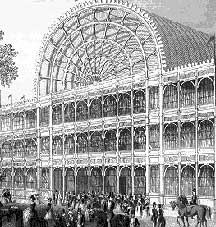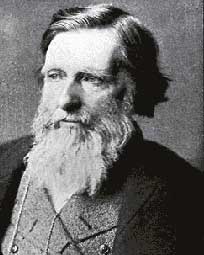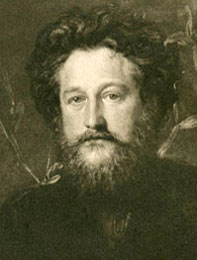
 |
 |
 |
 |
5. Great Exhibition of the Works of Industry of All Nations, 1851 (Also known as the Crystal Palace Exhibition) Awash with pride and profits from the Industrial Revolution the English upper class, spearheaded by Prince Albert (husband of Queen Victoria) organized a showcase for modern industrial technology and design. England and a number of invited countries displayed their achievements in four categories: Raw Materials, Machinery, Manufacturers and Fine Arts. The exhibition was a popular success but the critical reviews were not complementary of the exhibitors. Critics found the work created by industrialized methods to be shoddy and poorly designed, full of superfluous ornaments that did not enhance the product. The Victorian propensity for over-decoration with a hodgepodge of unrelated styles was ridiculed as symptomatic of a tasteless and over-capitalistic society.
|
6. The Grammar of Ornament In response to the call for better understanding of design and ornamentation, Owen Jones published an exhaustive inventory of international and historical decorative styles. Printed in colorful lithographs, the book includes 20 sections of illustrated motifs and Jones's 37 Propositions on what makes good design. ’ÄúModern, scientific and devoid of deliberate historicism, operating by principles to create an ornament for every kind of decoration.’Äù (Jespersen, 2008) Proposition 5 Jones' books... ’Äúpioneered new standards in chromolithography. Jones used his printing press to enter the lucrative market for illustrated and illuminated gift books ... He developed innovative new binding techniques ..., papier mˆ¢chˆ© and terracotta ...much of which could trace its aesthetic lineage back to sumptuous medieval illuminated manuscripts and religious bindings.’Äù
|
7. John Ruskin (1819’Äì1900) Born to wealth, John Ruskin was an author, poet and art critic whose socialist convictions caused him to reject his fortune to fulfill his ideologies. Ruskin's theorized that the Industrial Revolution's division of labor induced monotony and was the main cause of the unhappiness of the poor. He looked backward to an idealized medieval period as a paradigm of the union of art and labor in service to society. He romanticized ’ÄúThe organic relationship ...between the worker and his guild, the worker and his community, between the worker and his natural environment, and between the worker and his God.’Äù Ruskin's writings influenced many important social advocates including Mahatma Gandhi. His anti-capitalist essay, Unto This Last, 1862, criticized the destructive effects of industrialization on the natural world, a foreshadowing of today's Green Movement. Ruskin's critical art reviews could make or break the careers of contemporary painters. This explains why Ruskin's critical review of James Whistler's paintings engendered a law suit. (See entry # 11 in Books))
Ruskin's initial support of the Pre-Raphaelites, a group of artists who rejected the 'decadence' of the established Royal Academy, gave the group the credibility they needed to be accepted as serious artists. Ruskin admired the group's commitment to nature and the belief that art should communicate truth. (Things went south after Ruskin's wife left him for one of the Pre-Raphaelites).
|
8. William Morris and the Toward the middle of the 19th century, a small group of young painters formed a secret society in reaction against what they felt was ’Äúthe frivolous art of the day." They deeply admired the simplicities of the early 15th century and wanted to bring English art back to a greater ’Äútruth to nature," something they felt had been lost in the grand manner of Raphael. ’ÄúAlthough the official Brotherhood lasted only a few years, their work and objectives influenced a second wave of English painters and artisans, including Edward Burne-Jones and William Morris, who came down to London from Oxford University to begin their careers in 1856. They met Dante Gabriel Rossetti, whom they greatly admired, and even moved into his old rooms. Morris and Rossetti set about designing a suite of furniture based on medieval models. These furnishings were an early foray into decorative arts. Within a few years, Morris founded Morris, Marshall, Faulkner, a firm devoted to producing artist-designed, hand-crafted household objects.’Äù "Morris and his Pre-Raphaelite associates deeply believed that beautiful objects would improve individual lives adversely affected by the harsh industrial world.’Äù Quote Source Delaware Art Museum site.
|